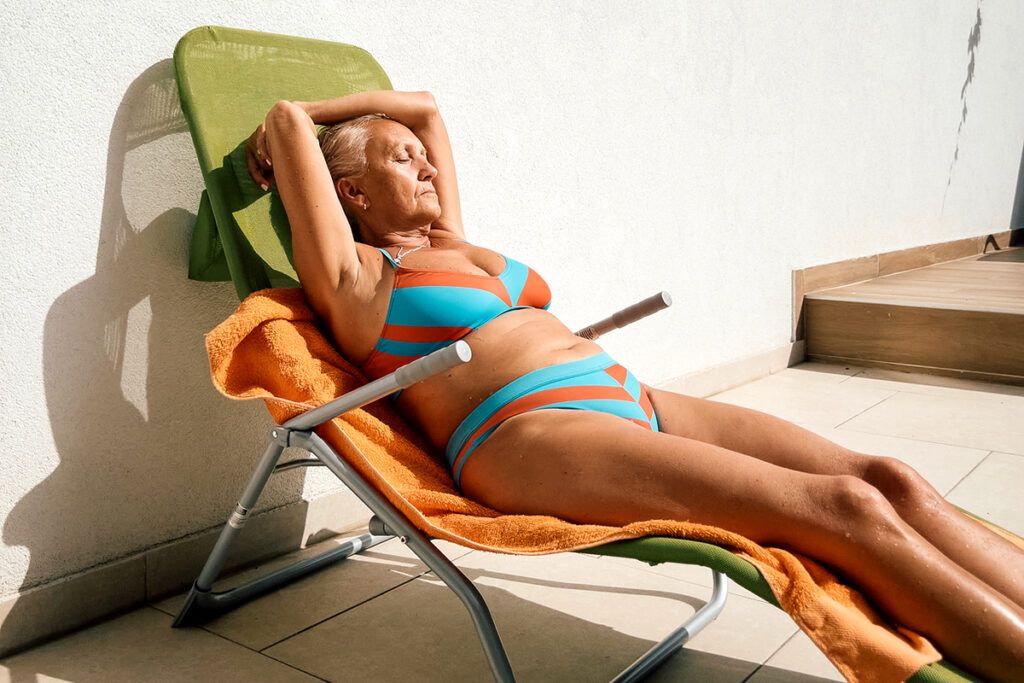Tinea versicolor is a common fungal infection that causes scaly patches on the skin, which can vary in color from brown to tan to white. It might look different depending on your skin color.
Also known as pityriasis versicolor, tinea versicolor typically affects the neck, torso, arms, and shoulders. It’s considered to be benign, meaning it isn’t too harmful, but it might be uncomfortable.
This infection is caused by the fungus Malassezia. This type of yeast is found naturally on the skin and usually doesn’t cause any problems. But when it grows rapidly, perhaps due to a weakened immune system, tinea versicolor can occur.
Its main symptom is causing dry patches of skin, and these patches may itch, but itching is more uncommon.
Tinea versicolor and itching

Tinea versicolor may cause itchiness, although this isn’t one of its most common symptoms. If you do experience itching with tinea versicolor, it’s likely to be mild.
Tinea versicolor is more likely to cause itching when you get hot and sweat, as this can irritate the patches. Heat and sweat might also worsen the condition because it grows in hot and humid conditions.
Many different factors can worsen the condition, such as genetics, environmental conditions, pregnancy, and oily skin.
If the condition itself isn’t causing itching, its treatment might. Treatment for tinea versicolor typically involves a topical cream (usually a corticosteroid), which is usually used to reduce itching and inflammation. But, sometimes, these medications cause side effects on your skin, including itching.
If you experience itching due to your medication, you should consider speaking with a doctor to find an alternative you can tolerate better.
Other symptoms
The most common symptoms of tinea versicolor are the discolored patches of skin. These skin patches:
- have a lighter (hypopigmentation) or darker color (hyperpigmentation) than the skin that surrounds them
- are usually located in the torso, back, arms, neck, chest, and shoulders
- don’t darken in the sun
- are sometimes located in the forehead in children
- are dry and scaly
You may also experience increased sweating and mild swelling.
Keep in mind that other conditions can cause similar symptoms. Some of these conditions include:
- vitiligo
- psoriasis
- eczema
- seborrheic dermatitis, which can cause redness, scaly patches, and dandruff
- a type of rash called pityriasis rosea
Talk with a healthcare professional if you experience these symptoms. They can help determine what’s causing these skin patches and give you the proper treatment. Usually, healthcare professionals can diagnose tinea versicolor just by looking at it. But they may also use some tests, like examining a sample of the skin under a microscope.
Treatments
Treatments for tinea versicolor are mainly topical. They include over-the-counter (OTC) and prescription creams, such as:
- antifungal shampoos like ciclopirox (Loprox), ketoconazole (Extina), and selenium sulfide (Selsun Blue)
- antifungal creams, such as clotrimazole (Lotrimin), miconazole, and terbinafine (Lamisil)
If these topical medications don’t work, or if tinea versicolor covers a large part of your body and is causing you discomfort, your healthcare professional may prescribe antifungal pills. These include:
- fluconazole (Diflucan)
- itraconazole (Sporanox)
Ketoconazole (Nizoral) pills were used to treat tinea versicolor, but they’re no longer used because of the drug’s potential to cause liver damage.
Keep in mind that these medications can cause side effects like itching or pain in the area where you apply the cream, headache, diarrhea, numbness, nausea, and stomach pain. If a healthcare professional prescribes these medications to treat tinea versicolor, they’ll monitor you closely.
It will take your skin a few months after treatment for it to return to its regular color.
In the meantime, to help prevent getting or having tinea versicolor reoccur, you can consider:
- staying in cooler and drier places
- avoiding excessive heat, sun exposure, and tanning beds
- avoiding excessive sweating
- wearing loose clothes
- avoiding using skin lotions that are too oily and greasy
If you need help covering the cost of medications, the free Optum Perks Discount Card could help you save up to 80% on prescription drugs. Follow the links on drug names for savings on that medication, or search for a specific drug here.
